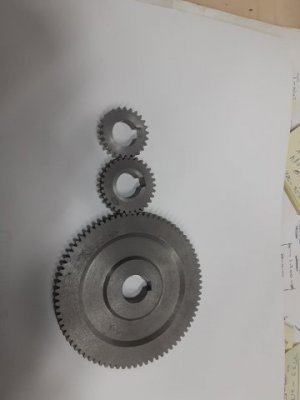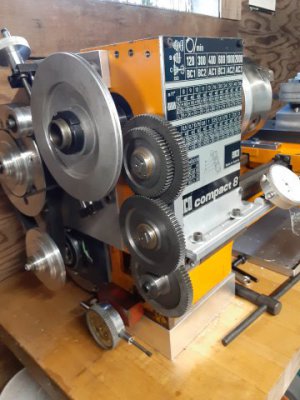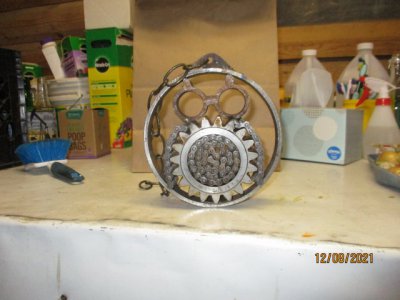Just circling back to close the loop on this little effort, I cast the replacement part yesterday and just wound the machine up on its maiden run a few minutes ago. Very smooth, very quiet.
I made my mould for the friction wheel out of some black acetal I had on hand and while I was at it made a few others for replacement feet out of what I think was LDPE, again from an off cut I had on hand. I mainly wanted ease of turning as my experience with casting silicones is they release easily from just about anything with no separate release agent, but I knew the plastics would also help with that. The mix ratio for this product is 100:3 by weight so it helps to mix a meaningful quantity otherwise the smaller of the two quantities gets hard to measure accurately. I use an an old school beam balance with the sliding weights — no batteries to go flat. Here’s a picture of the just-filled moulds.

Okay, I lied. That picture was of the moulds filled
the first time. I actually screwed up the volumes on the first batch and measured out three tenths of a gram instead of three grams! Uh yah, big time oops. Cleaning out uncured silicone is not fun… . Anyhow, second batch I did correctly and here’s the results.

The Shore 60A hardness is a bit soft for my liking but not terrible. My diy durometer says it’s not way off the hardness of original wheel but I think it is some. I’m running with it for a while though and see what happens.

The installation tool worked nicely to reinstall the split pin too. I made a second driver part for it so one drives the pin out and then the second one has a concave tip to drive the pin back in. Give me Singer any day to work on though — as beautiful and precise as these European machines are they’re equally fussy and hard to get at unless you’ve got the fingers of a watchmaker, and I do not.



So there you go. In the time between starting this and finishing it another almost identical Supermatic fell into my lap, also needing a new friction wheel, so I get to do it all again soon.

Thanks for looking!
frank














